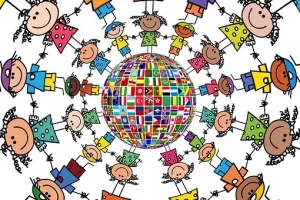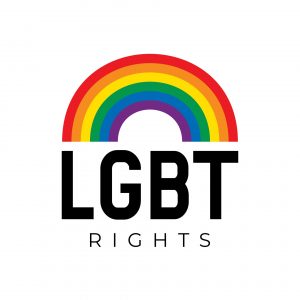Diversity strengthens the JAEGER Bruttechnik brand – employee & customer satisfaction.
 The family-owned company JAEGER Bruttechnik supports & lives the corporate culture with regard to diversity- for example in gender, age, social origin, sexual orientation, disability, religion and mindset.
The family-owned company JAEGER Bruttechnik supports & lives the corporate culture with regard to diversity- for example in gender, age, social origin, sexual orientation, disability, religion and mindset.
In order to meet these challenges, it is necessary to deal consciously with resources – especially personnel – to recognize and utilize all market potentials, to remain innovative and to have sufficiently qualified personnel available for this purpose. In short: to recognize and make the best possible use of existing potential and diversity.
Diversity Management, often referred to as “Diversity & Inclusion”, is understood as a strategic management approach to use internal and external personnel diversity to the advantage of all parties involved and thus contribute to increasing the company’s success.
What´s Diversity?
The term diversity (from the Latin “diversitas”) means variety and multiplicity and encompasses personal, social and structural differences as well as commonalities among people and groups. Because there are a multitude of dimensions of difference, diversity in the work context is also defined as the “mosaic of people” who bring a variety of professional and life experiences, viewpoints, values and worldviews as assets to their working lives.
In order to reduce the complexity that human diversity has and to provide a form of systematization and representation that illustrates all the essential differences and commonalities, the diversity wheel (Four Layers of Diversity) is often used:
Figure 1 Model of the “4 Layers of Diversity” according to Gardenswartz/Rowe, L. Gardenswartz and A. Rowe: Diverse Teams at Work; Society for Human Resource Management, 2002.
The model of the “Four Layers of Diversity” by the US-Americans Lee Gardenswartz and Anita Rowe is the leading model for systematizing diversity and for recording individual differences. The two consultants and book authors thus provide a widely used representation for addressing categories of distinction and affiliations in companies and organizations. The four-stage model, also known as the “diversity map” or “diversity wheel,” helps to capture differences and commonalities among people in an organization and make them tangible.
The diagram (see Figure 1) shows possible social categories, so-called “dimensions”, which cause differences and commonalities in a company and its environments (vis-à-vis customers, employees, suppliers, partners, stakeholders, etc.) and thus become effective in that these can become an advantage or disadvantage in different contexts.
At the center of the model is the individual personality of each person, around which the six core dimensions are arranged. These are also referred to as “inner dimensions.”
The core dimensions are those aspects that accompany people from birth or have been passed on to them through socialization and are thus changeable only to a limited extent, if at all. These are:

- Age
- Gender
- Ethnic Affiliation / Origin / Skin Colora
- Religion and World View
- Physical / Mental Abilities/Disabilities
- Sexuall Orientation
These characteristics are protected by national and international equal treatment regulations – so no discrimination or unequal treatment may take place according to them.
What is Diversity Management?
Simplified, you could say:
The goal of diversity management is to provide all employees and stakeholders with a framework in which they can and will perform to their full potential.
Stakeholders in Diversity Management
Stakeholders in diversity management are all those involved. In general, a distinction can be made between internal and external stakeholders. Internal stakeholders include, for example, managers at various levels and employees. External stakeholders include the general public as well as applicants, customers, partners and suppliers.
Which stakeholders are specifically included in diversity management depends on the objectives and strategic orientation, and therefore varies from company to company. If, for example, the focus is increasingly on internal stakeholders, an internal cultural change can sometimes be aimed at in order to achieve greater effectiveness, innovation and customer orientation through the appreciation of diversity. If the focus is more on engaging external stakeholders, the focus will probably be on employer attractiveness, sales or corporate social responsibility (CSR).
JAEGER Bruttechnik is a Certificated Supporter of the Diversity Charta.
“LGBTQ?” Meaning and life culture at JAEGER Bruttechnik
LGBTQ: Lesbian, Gay, Bisexual, Transgender, Queer
The abbreviation “LGBTQ” is taken from English and stands for “Lesbian Gay Bisexual Transgender Queer”. The German translation of this collective term is “LSBTQ”, which means “Lesbian Gay Bisexual Transgender Queer”. In the meantime, LGBT has become accepted as a short form for all genders Gender, identities and sexual orientations that deviate from bisexual and heterosexual norms. All subgroups demand freedoms in relation to the socally shaped two-sex order and the associated social Norm of Heteronormativity (opposite-sex love)-(https://de.wikipedia.org/wiki/LGBT) Supplementing the acronym “LGBTQ” are also “I,” which stands for intersex people, “A” for asexual and agender, and “+” or “*” as placeholders for other gender identities.

We are convinced: Lived diversity and appreciation of this diversity have a positive impact at JAEGER Bruttechnik, on society in Germany & Worldwide.
To implement this culture of life we will
Cultivate an organizational culture that is characterized by mutual respect and appreciation. We create the conditions for managers and employees to recognize, share and live these values. In doing so, they have a special obligation.
Review our HR processes and ensure that they reflect the diverse skills and talents of all employees as well as our performance aspirations.
Recognize diversity within and outside JAEGER Bruttechnik, value the potential it contains and use it profitably for the company or institution.
Making the contents of the culture of life the subject of internal and external dialogue.
Provide information about our activities and progress in promoting diversity and appreciation.
Inform our workforce about the added value of diversity and involve them in implementing the culture of life.The diversity of society, influenced by globalization, demographic and social change, is also shaping the world of work in Germany. We can only be successful economically and as a society if we recognize, promote and utilize the diversity that exists. This applies to the diversity of our workforce and the diverse needs of our business partners and citizens. The diversity of our employees with their different skills and talents opens up opportunities for innovative and creative solutions. The implementation of the “Diversity Charter” at JAEGER Bruttechnik aims to create an appreciative working environment for all employees – regardless of age, ethnic origin and nationality, gender and gender identity, physical and mental abilities, religion and world view, sexual orientation and social origin. We create a climate of mutual respect and trust. This has a positive impact on our reputation in Germany as well as in other countries around the world.







